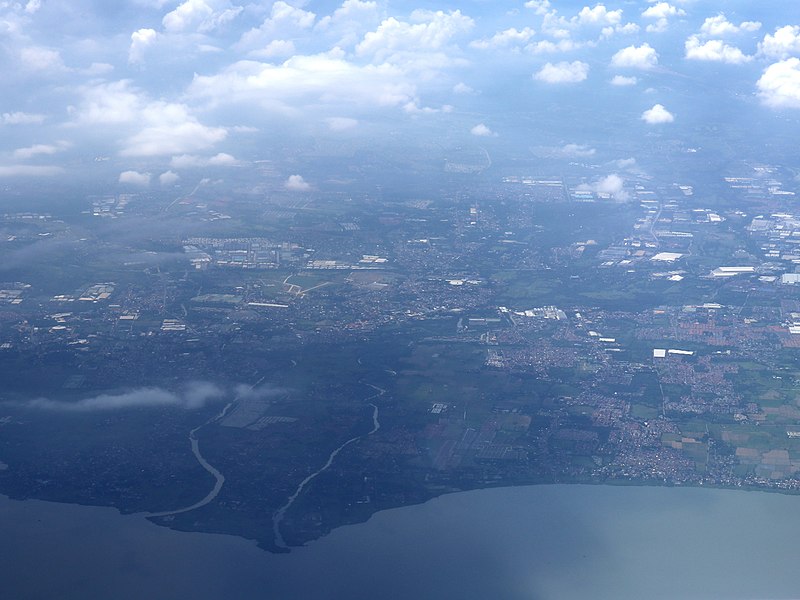
Aerial view of Calamba by Patrickroque01 – Taken using my own camera EOS M100
Discovering Calamba, Laguna: A Blend of History, Nature, and Modern Charm
Nestled in the heart of Laguna province in the Philippines, Calamba is a component city rich in historical significance, cultural heritage, and natural beauty. With a 2020 population of 539,671 it is the largest city in its province. Land area is 149.50 sq km or 57.72 sq mi.
Known primarily as the birthplace of the country’s national hero, Dr. José Rizal, Calamba has evolved into a bustling urban center while retaining its deep connection to its roots. Whether you’re a history buff, a nature lover, or someone looking to experience local life, Calamba offers a diverse range of experiences.
Historical Significance
Calamba holds a special place in the heart of every Filipino because it is the hometown of Dr. José Rizal, one of the most prominent figures in Philippine history. His ancestral home, Rizal Shrine, is one of the top destinations in the city. This well-preserved Spanish-era house, now a museum, offers a glimpse into Rizal’s childhood and family life. Visitors can explore various exhibits showcasing personal memorabilia, replicas of his literary works, and artifacts that provide insight into his life as a nationalist and revolutionary.
Adjacent to the Rizal Shrine stands the Calamba Rizal Monument, an iconic structure featuring a giant clay pot or “kalan-banga,” which represents the origin of the city’s name. The word “Calamba” is said to be derived from “kalan” (stove) and “banga” (clay pot), symbolizing the city’s agricultural past. The pot also signifies the unity of its people, shaped by shared history and community spirit.
Natural Attractions
Beyond its historical landmarks, Calamba is also blessed with a variety of natural attractions, making it a destination for those who want to unwind in the great outdoors. The city is known for its natural hot springs, sourced from the slopes of Mount Makiling, a dormant volcano. Barangays like Pansol and Los Baños are home to numerous private resorts, offering relaxing pools fed by warm spring waters that are believed to have therapeutic benefits. A dip in these hot springs is perfect for relaxing after a long week, and many locals and tourists alike flock to these resorts for some much-needed rest and recreation.
If you’re up for a more adventurous experience, hiking up Mount Makiling offers a thrilling yet manageable trek through lush forests and diverse ecosystems. The mountain’s natural beauty and the scenic views from its summit are worth the effort. It’s also a popular spot for birdwatching and nature walks, as the mountain is home to many endemic plant and animal species.
Modern Calamba
As one of the fastest-growing cities in the Calabarzon region, Calamba has seen rapid urban development over the years. The city’s progress is evident in its modern infrastructure, commercial centers, and business districts. SM City Calamba, a popular shopping mall, and Calamba Premiere International Park showcase the city’s commercial and industrial growth, offering a mix of retail, entertainment, and business opportunities. This development has turned Calamba into a hub of activity and a gateway to nearby cities in Laguna and beyond.
Despite its modern growth, Calamba continues to foster a strong connection to its agricultural roots. A visit to Calamba’s public markets will introduce you to the local produce—fresh fruits, vegetables, and Laguna delicacies such as buko pie and espasol, which are staples for tourists who want to take home a taste of the province.
Cultural Events and Festivals
Calamba’s vibrant culture comes to life during its local festivals, particularly the Bañamos Festival, which celebrates the city’s hot springs and honors the waters that have long brought prosperity to the community. The festival features parades, cultural performances, and street dancing, offering a glimpse into the city’s rich traditions and the joyful spirit of its people.
Another significant event is Rizal Day, celebrated annually on December 30 to commemorate the martyrdom of José Rizal. This occasion is marked by wreath-laying ceremonies, cultural presentations, and other activities that pay tribute to Rizal’s legacy.